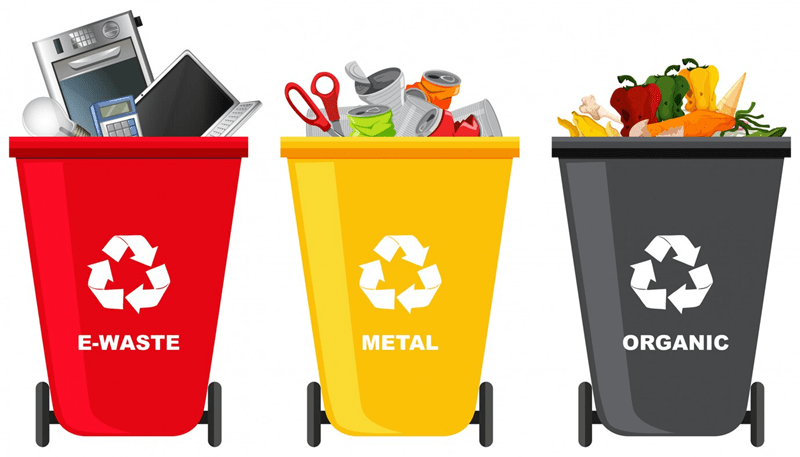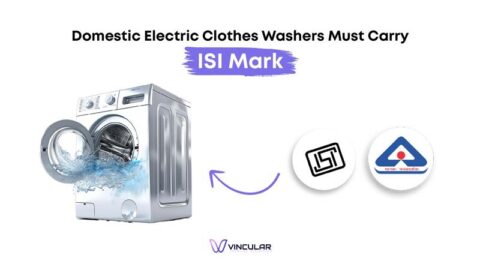Waste segregation is an essential step in proper waste management to reduce environmental impact and promote recycling.
According to the World Bank, we generate approximately 2.01 billion tonnes of solid waste worldwide each year.
However, at least 33% of that waste is not managed sustainably and that’s an extremely low figure.
Looking ahead, global waste is projected to reach 3.40 billion tons by 2050, which is more than double the amount of waste produced by the population over the same period.
So, the importance of waste segregation is something that we can no longer afford to ignore.
Let’s start by understanding what is waste segregation and how we can segregate waste in an effective way at home/office.
What is Waste Segregation?

In simple words, waste segregation refers to the process of separating wet waste from dry waste.
The aim is to make the task of recycling dry non-biodegradable waste easier and treat wet waste like leftover food, used tea leaves, etc. as compost.
If waste is not separated or segregated properly, it all gets mixed up in landfills. As a result, it is important to correctly identify the kind of waste generated to segregate it appropriately.
Know your Waste

It is important to understand the difference between waste types before we can talk about how we practice waste segregation.
1. Organic Waste (Biodegradable)
Organic waste is any material that is biodegradable and comes from either an animal or a plant like:
- Food scraps
- Fruit and vegetable peels
- Tea bags and coffee grounds
- Yard waste (grass clippings, leaves)
Over time, they break down and decompose into manure by the action of microorganisms. However, it’s important to note that you shouldn’t dump them anywhere you want.
2. Recyclable Waste
Recyclable waste is materials that you can collect, process, and use to create new products. They can be recycled instead of being thrown away as waste.
Some examples of recyclable waste are:
- Paper and cardboard (newspapers, magazines, cardboard boxes)
- Plastics (bottles, containers, plastic bags, etc.)
- Glass (glass bottles, jars)
- Metal (cans, aluminium foil, tin)
3. Non-Recyclable Waste (Residual Waste)
Non-recyclable waste are the items that cannot be recycled, reused or composted due to their composition, contaminants, or the lack of a recycling infrastructure.
Some examples are:
- Food-tainted items
- Ceramics and kitchenware
- Windows and mirrors
- Plastic and bubble wrap
- Wax boxes
- Cigarette ends
- Plastic grocery bags
- Squeeze bottles
- Straws
These materials usually end up in landfilled or burned.
4. Hazardous Waste
This Waste is classified as waste that has properties that make it dangerous or capable of harming human health or the environment. Hazardous waste includes:
- Batteries
- Electronic waste (computers, phones, appliances)
- Paints and chemicals
- Fluorescent bulbs
Simple Ways to Practise Waste Segregation at Home and Office

Proper waste segregation is crucial as it ensures better recycling, minimizes environmental impact, and optimizes waste management processes. Here are a few ways you can practise waste segregation at your home and office.
- Use Separate Bins: Place separate bins or containers for each waste category in your home or workplace. Label them clearly so that everyone knows where to dispose of their waste.
- Educate Everyone: Educate your family, roommates, or coworkers about the importance of waste segregation and how to properly do it.
- Minimize Contamination: Ensure that each waste category is as clean and dry as possible. Contamination can make recycling efforts less effective.
- Composting: If you have a composting facility or plan, separate organic waste to create compost, which can be used to enrich soil.
- Recyclables: Rinse out containers before recycling. Flatten cardboard boxes to save space.
- Hazardous Waste: Collect hazardous waste separately in a safe and labelled container. Many communities have designated drop-off locations for hazardous waste disposal.
- Electronic Waste: Many electronics contain hazardous materials. Research local e-waste collection programs or disposal methods.
- Check Local Regulations: Regulations and guidelines for waste segregation can vary by location. Check with your local waste management authority for specific instructions and requirements.
- Reduce and Reuse: Remember the “3 Rs” – Reduce, Reuse, Recycle. Minimize waste generation by avoiding single-use items and reusing items where possible.
- Community Initiatives: Encourage your community to participate in waste segregation and recycling programs. Community efforts can have a more significant impact.
Technologies Developed for Waste Segregation
Several technologies are being developed and implemented to help with waste segregation.
The effectiveness of these technologies depends on factors like the type of waste, the scale of operations, and the available budget.
Let’s explore some innovative developments in waste segregation technologies that aim to improve efficiency and effectiveness:
- Automated Sorting Systems: These systems use various techniques such as conveyor belts, sensors, cameras, and robotics to sort and separate different types of waste. Automated sorting systems can identify and separate materials like paper, cardboard, glass, plastic, and metals efficiently.
- Optical Sorting Technology: These systems are particularly useful for sorting materials like plastics, paper, and glass.
- Magnetic Separators: This technology is commonly used in recycling facilities to separate metals.
- Mobile Apps and QR Codes: Mobile applications and QR codes on packaging can help consumers and waste collectors identify the proper disposal or recycling methods for specific products and materials.
- Chemical Analysis: Advanced chemical analysis techniques can be used to identify hazardous materials in the waste stream, ensuring their safe disposal or recycling.
Waste management facilities often employ a combination of these technologies to achieve efficient waste segregation and recycling goals, contributing to environmental sustainability and resource conservation.
How Vincular can Become your Partner in Waste Management?

Vincular is India’s best regulatory compliance company and has proven to be the most reliable partner for Waste Management over the years especially dealing in E-waste Management, Plastic Waste Management and Battery Waste Management.
Moreover, our company’s commitment goes beyond its operations to ensure a more sustainable and safer world. From assuring the safety of day-to-day consumer goods to aiding in energy conservation we go above our service and aim at the well-being of society.




